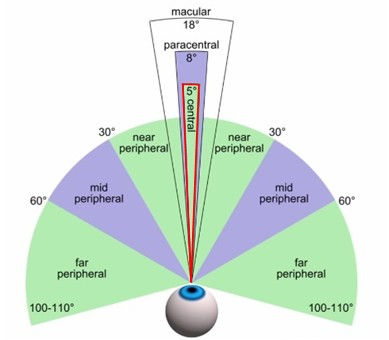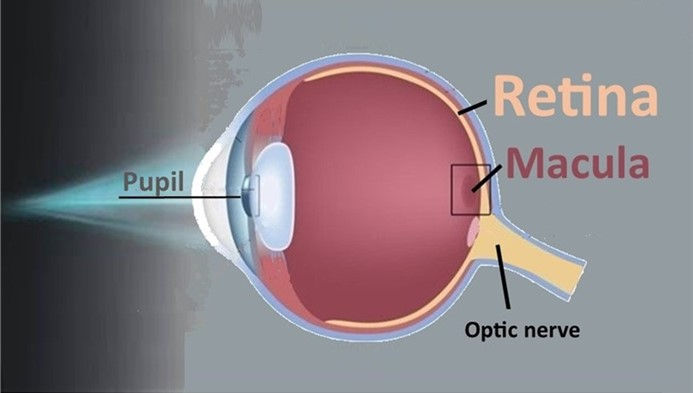Angels in the corner of your eye: central and peripheral vision
- Physics Core

- Sep 14, 2024
- 3 min read
Updated: Nov 1
I met a woman who claimed to have seen angels. "They are all around us," she explained. "You can spot them from the corner of your eye. They look like flickers of vibrating energy and appear in the moment of sadness, offering comfort and unconditional love." Her words reflected widespread belief in the healing power of faith and were so touching that I couldn't bring myself to tell her it was her peripheral vision playing tricks on her.

The structure of our eyes enables us to handle various tasks effectively. Central vision provides a sharp, high-definition view of the object we focus on, while peripheral vision gives a general idea of the surrounding environment without diverting attention from the main focus. For instance, we concentrate on the road ahead while maintaining a side view for potential hazards. If peripheral vision detects a disturbance, we turn our heads and engage central vision to investigate the problem in detail.
The human visual field spans approximately 200° horizontally (Fig. 2). Central vision, marked in red, covers only 5° of this span, with the remainder being peripheral vision. Although we may not realize it, we constantly move our eyes to align this 5° zone with the object of interest. From this focal point, visual clarity gradually decreases, and at the edges of the visual field, it becomes so limited that we can only perceive shapes and movements. This arrangement allows us to focus on one object at a time, causing other objects to blend into the background.

So, how does the anatomy of our eyes support the distinction between central and peripheral vision? Our brain gathers information about the external environment through light (Fig. 3). Light enters the eye through the pupil and excites the photoreceptor cells located in the retina at the back of the eyeball. The nerve then transmits these excitations as signals to the brain, where they are transformed into visual images.

The macula, located at the center of the retina, plays a vital role in central vision. A line drawn from the macula through the pupil aligns with the 5° zone in Fig. 2. Objects in this zone are seen with greater clarity and detail because the macula contains the highest concentration of photoreceptors. Additionally, the information from these photoreceptors is sent to a brain region with significantly more processing power than the area responsible for peripheral vision.
Imagine driving on a country road, admiring the sunset over a lake (Fig. 3). Can you read the license plate of an oncoming car from the corner of your eye? You'd probably struggle even to see the plate. Now, focus on the plate and slightly shift your gaze. You can still see the number clearly, but your brain struggles to process the information. You won't be able to memorize the number from this angle because the plate is now in the near peripheral zone of your visual field, which is linked to a brain area with lower processing power. You can test this with text (Fig. 1). The meaning of the words will fade first, with the text becoming more blurry as it moves towards the far peripheral region.

We are unable to concentrate on two tasks at once. While this might appear to be a disadvantage, it is a blessing. Imagine trying to focus on a conversation with a friend if every other sound in the room was equally audible. Nature, in its wisdom, achieves a perfect balance by combining the best of both worlds. Our central vision brings the object of interest into focus, while our peripheral vision helps us stay aware of changes in the background. This is why peripheral vision is particularly good at spotting movements and shapes.
Angels reside at the edges of our peripheral vision for the same reason monsters lurk in the dark closets. They are drawn to areas of limited visibility, where imagination can run wild. Unbeknownst to us, our brain interprets any change in the background as a potential threat, triggering an involuntary reflex to turn our head and investigate what is happening there. We never ignore these signals and always respond with a subconscious eye movement. So, if a shadowy figure disappears when you look at it directly, then it had never been there in the first place.

Comments